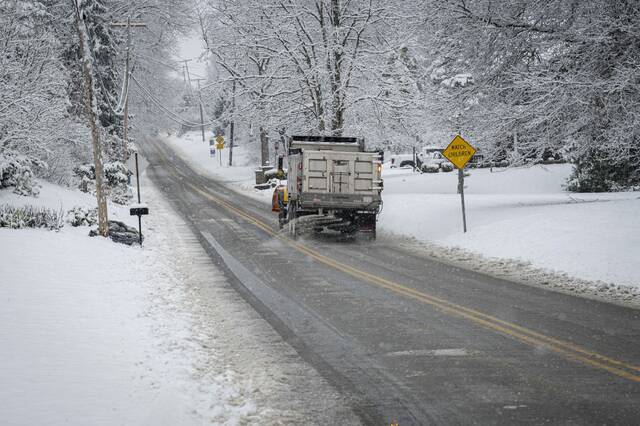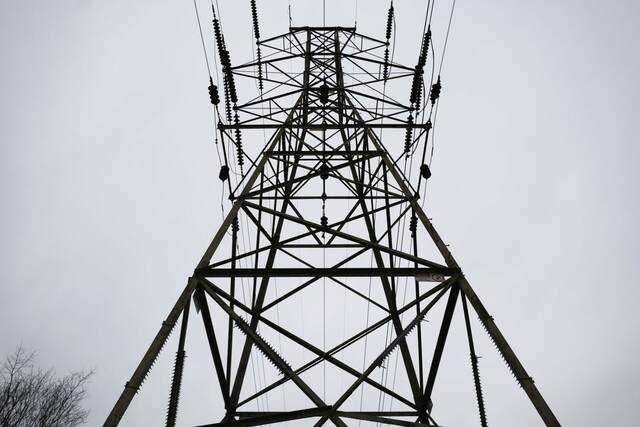Wait times at Western Pennsylvania’s emergency rooms are getting longer, following a national trend spurred by covid-19, staffing shortages and an overall increase in demand for health care.
“Wait times — they always vary by time of day, even hour by hour — but this is the worst I’ve seen them for very long periods of time, and I’ve been around for over 30 years in emergency medicine,” said Dr. Tom Campbell, chair of emergency medicine at Allegheny Health Network (AHN). “I think there’s probably multiple reasons.”
One reason, he said, is the covid-19 pandemic.
The number of daily covid-related hospitalizations is rising statewide, according to data from the Pennsylvania Department of Health’s Covid-19 Early Warning Monitoring System Dashboard. The dashboard, last updated Friday, showed that there were, on average, about 2,016 covid-related hospitalizations daily over the last seven days of available data. That was a jump from about 1,819 cases per day in the prior seven-day period.
Allegheny County was averaging 268.6 covid-related hospitalizations daily in the most recent data, while Westmoreland County was seeing about about 42 patients per day over the same span.
The percentage of hospital emergency visits due to covid-like illness was around 1% in Allegheny County, around 1.4% in Westmoreland and about 1.5% statewide, according to the most recent data.
Allegheny County has also seen an increase in breakthrough covid-19 cases among fully vaccinated individuals, though hospitalization and death remain rare in vaccinated people statewide.
Though covid-19 is contributing to the longer hospital wait times, it’s not the only factor, said Dr. Donald Yealy, UPMC’s senior medical director and chair of emergency medicine.
Health experts, he said, have noticed that “many people may have deferred or delayed health care” during the pandemic. That is also contributing to an overall increase in demand for health care.
A nationwide staffing shortage, particularly among nurses, is also contributing to backlogs, Yealy and Campbell said.
Some nurses have realized “this is a job that does come with some risk” and left the profession during the pandemic, Campbell said. Others opted for traveling nursing positions, which can be lucrative, while others who were later in their careers chose early retirement. Plus, Campbell said, enrollment has been down in nursing programs.
A combination of those factors, he said, have caused wait times to jump in emergency departments.
“As an emergency provider, we’re a safety net. We’re the place people come 24 hours a day. We’re always here, we’re always open,” Campbell said. “We feel a little defeated when people have to wait to get the care they need.”
Patients with life-threatening concerns, he said, will be seen first. The people waiting longer are those whose complaints are less serious — those who have sprained ankles or minor cuts and those with mild symptoms who want covid tests.
Wait times at UPMC emergency departments — including at UPMC’s Children’s Hospital — have gone up from prior times of 30 to 60 minutes to several hours, Yealy said, though wait times vary depending on the time of day and emergency department. Those lengthier waits, he said, are happening at peak times. This time of year is a historically busy time for emergency departments, Yealy said.
Excela Health Frick Hospital in Mt. Pleasant earlier this month erected an outdoor tent near their emergency department to treat patients with minor issues as the number of patients increased.
“Much like every provider in the region, Excela Emergency Departments are experiencing a significant rise over the past several weeks in patient volumes,” said Excela Health spokesman Tom Chakurda. “In fact, cumulative numbers across our system are the highest we’ve seen in nearly three years. Suffice it to say, these increases have impacted wait times. However, we prioritize those patients with the most serious and life-threatening conditions.”
Parents are taking their kids to the emergency department for covid-19 tests, because, after a potential exposure, they can’t go back to school without a negative test. Others, Campbell said, come to the emergency room concerned about “very minor symptoms.”
“They get sniffles or a sinus headache that they normally wouldn’t come for, and now they’re worried it might be covid,” Campbell said.
They’ve also seen an influx in respiratory syncytial virus (RSV), a respiratory virus that has been spreading more in the region throughout the summer, he said.
Patients who have more mild injuries or illnesses, Yealy and Campbell said, should consider urgent care options or office visits or telemedicine appointments with their primary care physicians. That way, they can get the care they need without lengthy emergency room waits.
“Be aware of other options,” Yealy said.
For those who need emergency care, however, there’s no need to avoid the emergency room.
“We don’t want people to not come like they did earlier in the pandemic,” Campbell said, explaining that some people delayed getting medical care because they worried they’d be exposed to covid-19 in a hospital, but ultimately came the hospital sicker than they would have been if they would have sought medical help immediately.
“We’re not refusing emergency department visits,” Yealy said.
Elective procedures are still proceeding at AHN and UPMC. At UPMC, Yealy said, decisions on continuing or delaying elective operations are made by individual patients and their physicians, and there are no plans to halt them altogether. At AHN, they’ve tried to spread out scheduling of such procedures to ease the burden on under-staffed hospitals, while also moving some elective operations to outpatient centers when possible.
Though experts said it’s impossible to predict what the future brings, Yealy said health officials do prepare for the potential that the pandemic could worsen.
“We’ve never had to deny care and it’s our goal to never do that,” he said.








